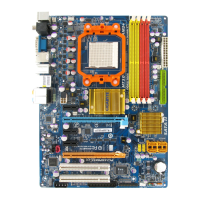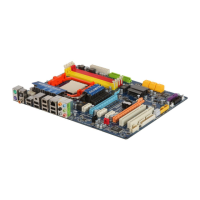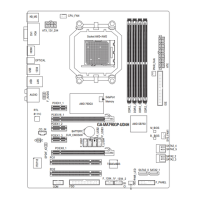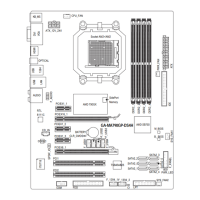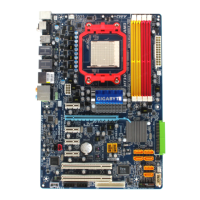Appendix- 83 -
English
5-1-2 Configuring GIGABYTE SATA2 SATA Controller
A. Installing SATA hard drive(s) in your computer
Attach one end of the SATA signal cable to the rear of the SATA hard drive and the other end to available
SATA port on the motherboard. If there is more than one SATA controller on your motherboard, refer to
"Chapter 1," Hardware Installation," to identify the SATA controller for the SATA port. (For example, on
this motherboard, the GSATAII_1, GSATAII_2 and eSATA ports are supported by GIGABYTE SATA2.)
Then connect the power connector from your power supply to the hard drive.
B. Configuring SATA controller mode and device boot order in BIOS Setup
Make sure to configure the SATA controller mode correctly in system BIOS Setup and set the device
boot order.
Step 1:
Turn on your computer and press <Delete> to enter BIOS Setup during the POST. In BIOS Setup, go to
Integrated Periperals --> OnBoard PCIE Device (Figure 1).
Figure 1
CMOS Setup Utility-Copyright (C) 1984-2007 Award Software
Integrated Peripherals
` IDE Configuration [Press Enter]
OnChip SATA Controller [Enabled]
OnChip SATA Type [Native IDE]
` OnBoard PCIE Device [Press Enter]
Onboard Audio Function [Auto]
Onboard 1394 Function [Enabled]
OnChip USB Controller [Enabled]
USB EHCI Controller [Enabled]
USB Keyboard Support [Disabled]
USB Mouse Support [Disabled]
Legacy USB storage detect [Enabled]
Onboard Serial Port 1 [3F8/IRQ4]
Onboard Parallel Port [378/IRQ7]
Parallel Port Mode [SPP]
x ECP Mode Use DMA 3
KLJI: Move Enter: Select +/-/PU/PD: Value F10: Save ESC: Exit F1: General Help
F5: Previous Values F6: Fail-Safe Defaults F7: Optimized Defaults
Item Help
Menu Level`
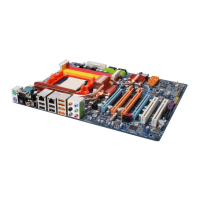
